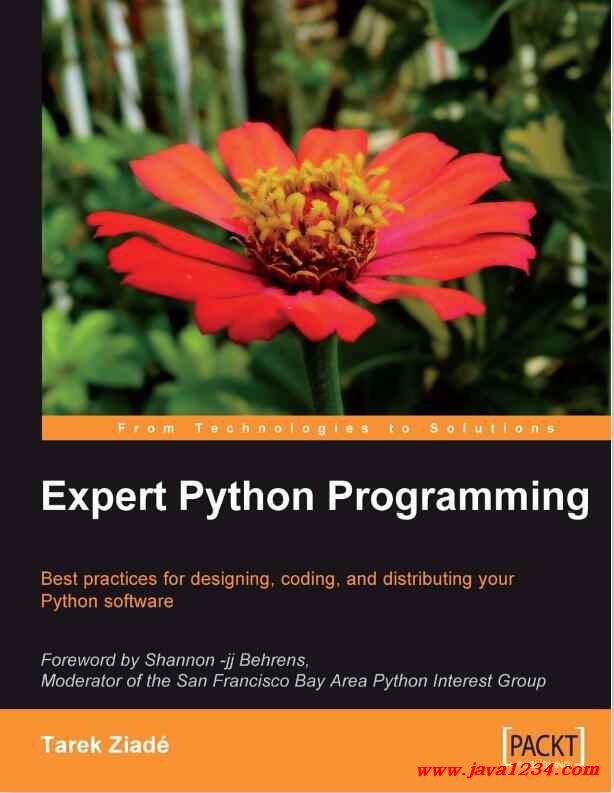| 失效链接处理 |
|
Expert_Python_Programming PDF 下载
本站整理下载:
提取码:aqis
相关截图:

主要内容:
Python rocks!
From the earliest version in the late 1980s to the current version, it has evolved with
the same philosophy: providing a multi-paradigm programming language with
readability and productivity in mind.
People used to see Python as yet another scripting language and wouldn't feel right
about using it to build large systems. But through the years and thanks to some
pioneer companies, it became obvious that Python could be used to build almost any
kind of a system.
In fact, many developers that come from another language are charmed by Python
and make it their first choice.
This is something you are probably aware of if you have bought this book, so there's
no need to convince you about the merits of the language any further.
This book was written to express many years of experience in building all kinds of
applications with Python, from small system scripts done in a couple of hours to
very large applications written by dozens of developers over several years.
It describes the best practices used by developers to work with Python.
The first title that came up was Python Best Practices but it eventually became Expert
Python Programming because it covers some topics that are not focused on the
language itself but rather on the tools and techniques used to work with it.
In other words this book describes how an advanced Python developer works
every day.
Preface
What This Book Covers
Chapter 1 explains how to install Python and makes sure all readers have the closest,
standardized environment. I almost removed this chapter since the book is not
intended for beginners. But it was kept because there are definitely some experienced
Python programmers out there who are not aware of some of the things presented.
If you are, don't feel frustrated about it, as the rest of the book will probably meet
your needs.
Chapter 2 is about syntax best practices, below the class level. It presents iterators,
generators, descriptors, and so on, in an advanced way.
Chapter 3 is also about syntax best practices, but focuses above the class level.
Chapter 4 is about choosing good names. It is an extension to PEP 8 with naming best
practices, but also gives tips on designing good APIs.
Chapter 5 explains how to write a package and how to use code templates and then
focuses on how to release and distribute your code.
Chapter 6 extends Chapter 5 by describing how a full application can be written. It
demonstrates it through a small case study called Atomisator.
Chapter 7 is about zc.buildout, a system for managing a development environment
and releasing applications, which is widely used in the Zope and Plone community
and is now used outside the Zope world.
Chapter 8 gives some insight on how a project code base can be managed and
explains how to set up continuous integration.
Chapter 9 presents how to manage software life cycle through an iterative and
incremental approach.
Chapter 10 is about documentation and gives tips on technical writing and how
Python projects should be documented.
Chapter 11 explains Test-Driven Development and the tools that can be used to do it.
Chapter 12 is about optimization. It gives profiling techniques and an optimization
strategy guideline.
Chapter 13 extends Chapter 12 by providing some solutions to speed up
your programs.
Chapter 14 ends the book with a set of useful design patterns.
|




 苏公网安备 32061202001004号
苏公网安备 32061202001004号



